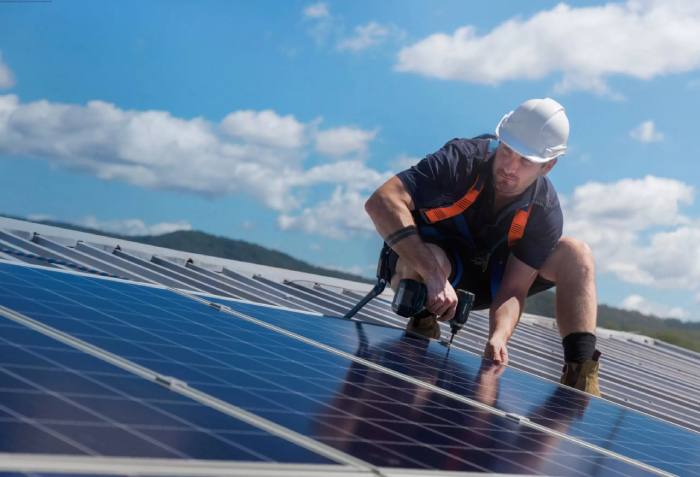Renewable energy sources have gotten much attention and popularity because of their environmental friendliness and the quest for long-term energy solutions. However Solar energy has emerged as a strong contender among the different renewable energy sources. As more people and organizations switch to solar energy, the demand for efficient and adaptable solar inverters grows. Please continue reading to learn about the subtleties of a hybrid solar inverter, including its features, advantages, and operation.
What precisely is a Hybrid Solar Inverter?
A hybrid solar inverter combines the capability of a solar and a battery inverter into a single device. Hence it is an essential part of a hybrid solar power system that integrates solar panels, batteries, and the electrical grid. A hybrid solar inverter’s primary function is to regulate the electricity flow between solar panels, batteries, and the electrical grid, maximizing energy consumption and optimizing self-consumption.
Key Characteristics of a Hybrid Solar Inverter
- Solar PV Input: A hybrid solar inverter is built to receive direct current (DC) electricity from solar panels. It transforms direct current (DC) electricity into alternating current (AC) power, which can power your home’s appliances and electronics.
- Battery Input: Hybrid solar inverters have a charge controller that permits batteries to be connected. This allows storing extra solar energy generated throughout the day for later usage, such as during low-light times or power outages.
- Grid Connection: A hybrid solar inverter may be linked to the power grid. This enables surplus solar energy to be sent into the grid, earning credits or feed-in tariffs depending on local rules. It also serves as a backup power supply from the grid if solar energy or battery capacity is insufficient.
- Energy Management: The capacity of a hybrid solar inverter to effectively manage energy flow is one of its essential capabilities. It reduces energy usage by using solar power when available, storing energy in batteries when solar power is restricted, and drawing electricity from the grid when necessary. This maximizes self-sufficiency and reduces dependency on the grid.
- Monitoring and control: Monitoring and control features are frequently found in hybrid solar inverters. They offer real-time information on energy generation, consumption, battery state, and grid usage. Some versions may be remotely monitored and managed using mobile applications or web-based interfaces, allowing users to measure their energy use and maximize the efficiency of their system.
How Does a Hybrid Solar Inverter Work?
A hybrid solar inverter operates by synchronizing and controlling power flow from numerous sources. Let’s have a look at how a hybrid solar inverters works in general:
- Solar Power Generation: During the day, solar panels create direct current (DC) power from sunlight. This direct current power is sent to the hybrid solar inverter.
- Conversion to AC Power: The hybrid solar inverter converts direct current (DC) to alternating current (AC), which may be used to power appliances or sent into the electrical grid.
- Prioritisation of Energy Consumption: The hybrid solar inverter automatically calculates the priority of energy consumption. It uses solar energy to satisfy urgent energy needs, decreasing dependency on the grid. Excess solar energy is stored in batteries or supplied back into the grid.
- Excess solar power is utilized to charge the batteries if the batteries attached to the hybrid inverters are not fully charged. Which basically guarantees that stored energy is available for subsequent use.
- Grid Interaction: When there is insufficient solar power or the batteries are depleted, the hybrid inverters effortlessly shifts to pulling power from the electrical grid. It guarantees that the linked loads receive continuous and uninterrupted electricity.
- Monitoring and Optimisation: The hybrid solar inverter continually checks energy generation, consumption, battery state, and grid usage. It optimizes energy flow to promote self-consumption, reduce grid dependency, and efficiently store extra energy.
The Advantages of a Hybrid Solar Inverter
The use of a hybrid solar inverter in a solar power system has various advantages:
- Increased Self-consumption: A hybrid solar inverter dramatically increases solar energy self-consumption. As a result less dependency on the power system and cheaper electricity costs.
- Electricity Independence: A hybrid solar inverter enables homes and businesses to become more self-sufficient in electricity. They may rely on their power source during grid interruptions or heavy electricity demand by storing extra solar energy in batteries.
- Environmental Impact: Hybrid solar inverters encourage using clean and renewable energy. Utilizing solar energy and minimizing fossil fuel dependency help create a greener and more sustainable future.
- Cost Savings: Lower power costs and other incentives, such as feed-in tariffs, can result in considerable long-term cost savings.
- Remote Monitoring and Control: Many hybrid solar inverters support remote monitoring and control. Users may check their energy output and consumption, modify settings, and improve the system’s efficiency from anywhere using mobile applications or web-based interfaces.
Conclusion
A hybrid solar inverter is a flexible and efficient equipment essential for maximizing energy usage in a solar power system. Eventually maximizes self-consumption, enhances energy independence, and decreases dependency on the grid by intelligently controlling the flow of electricity from solar panels, batteries, and the electrical grid.
With the growing popularity of solar energy, hybrid solar inverters, such as those offered by Luminous, are becoming vital for people looking for a long-term and cost-effective energy options.
Also read: 10 Must Have Extensions and Plugins for Selenium WebDriver
